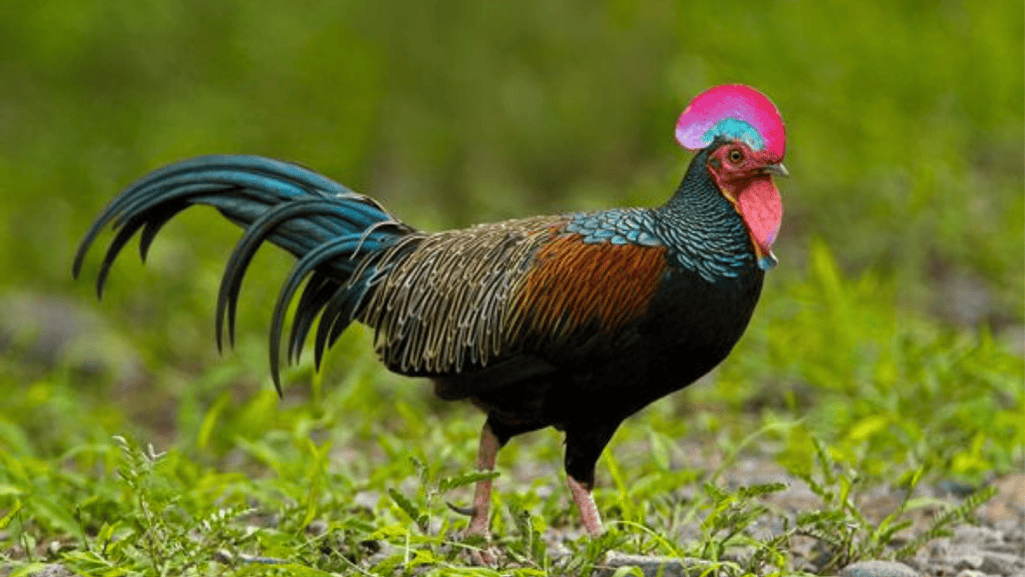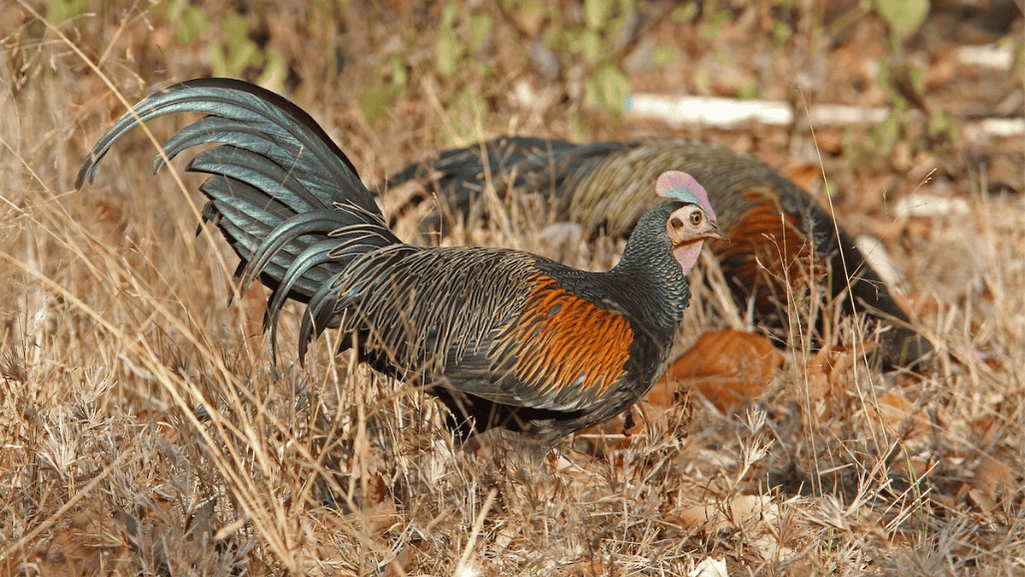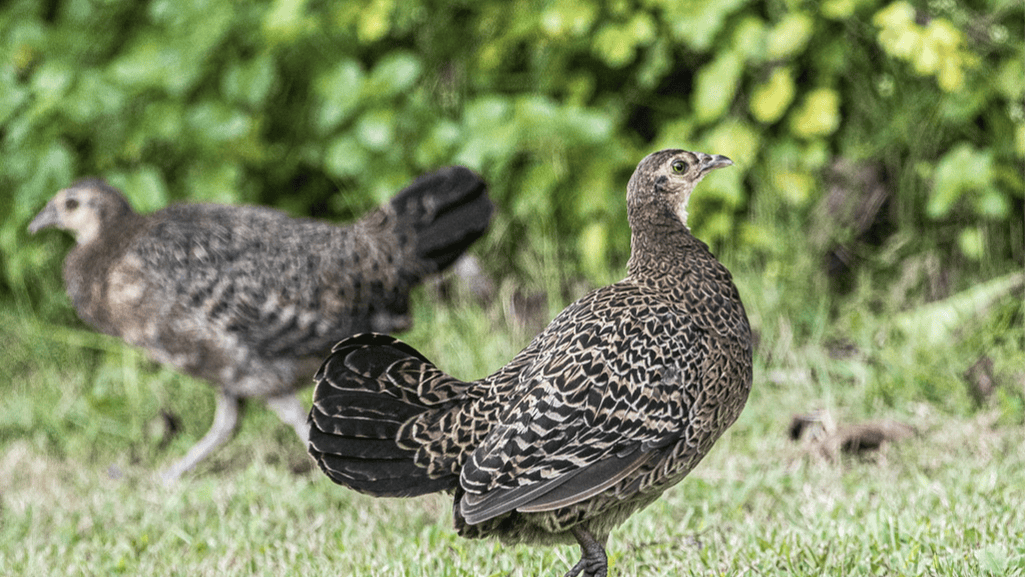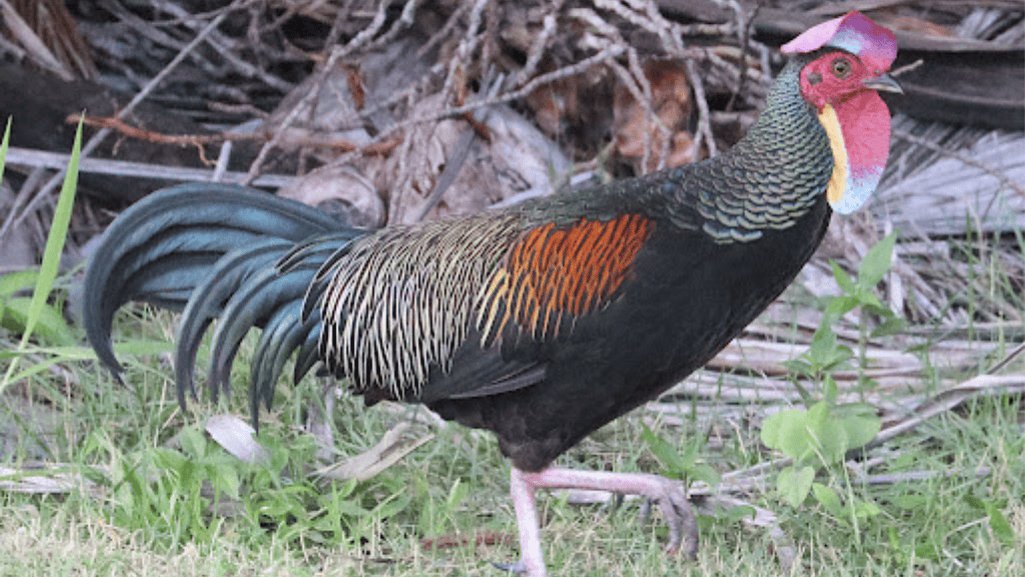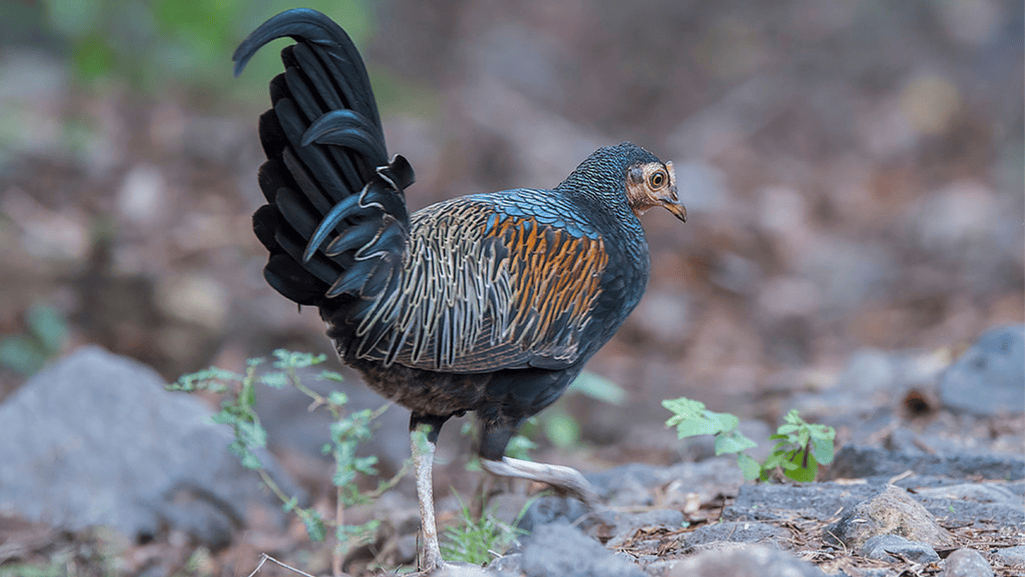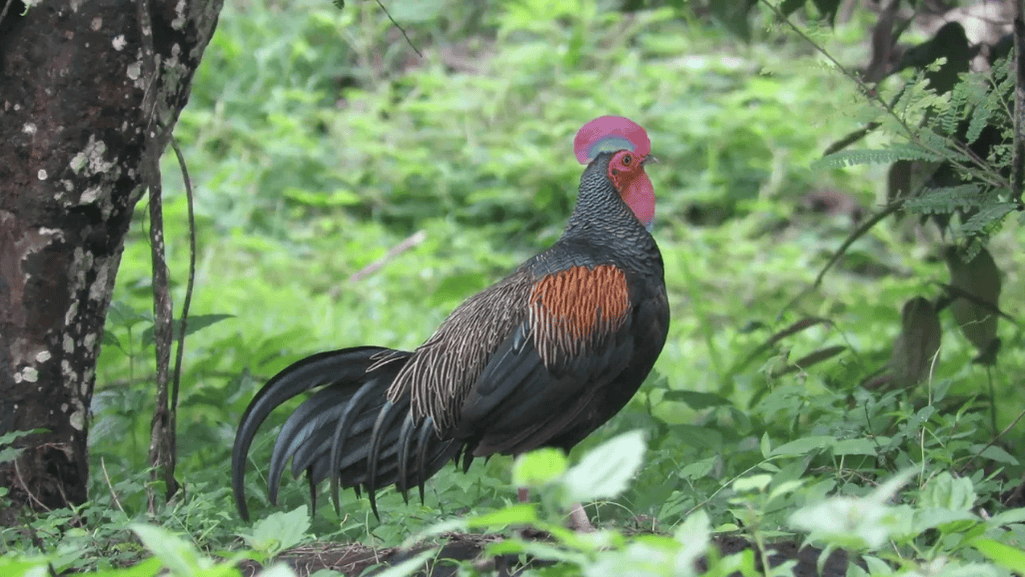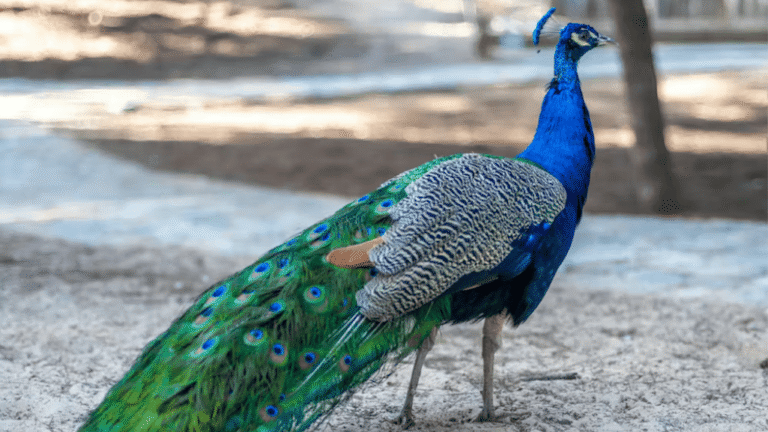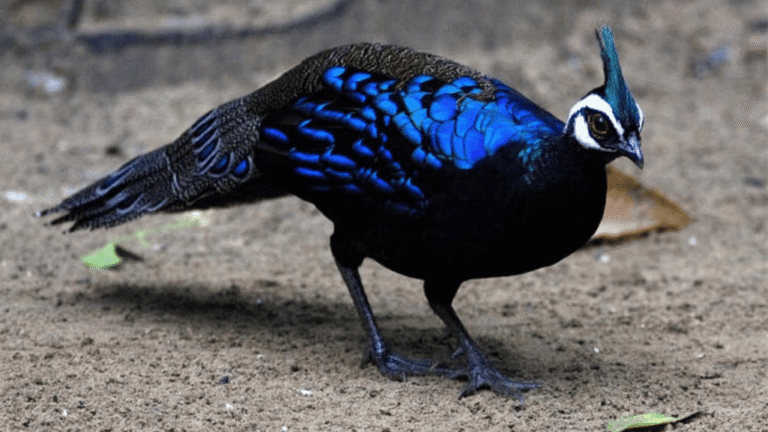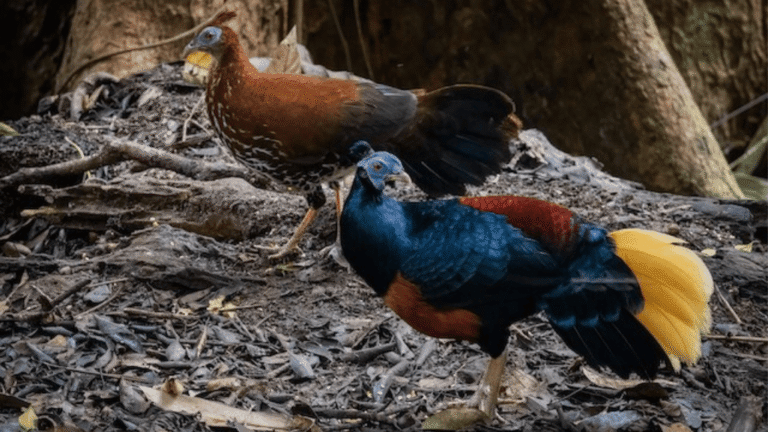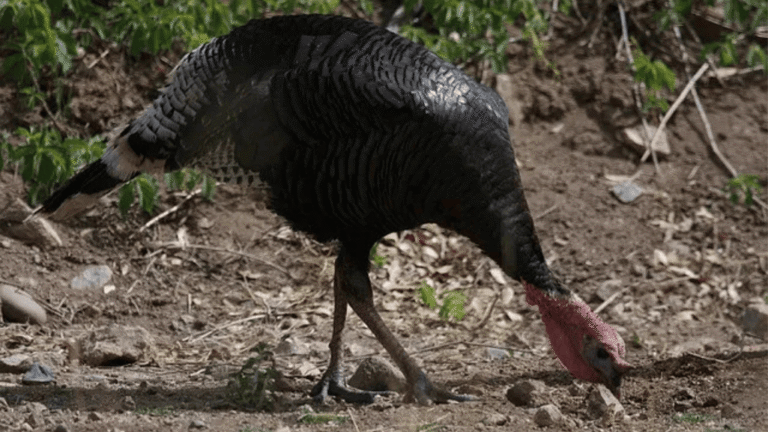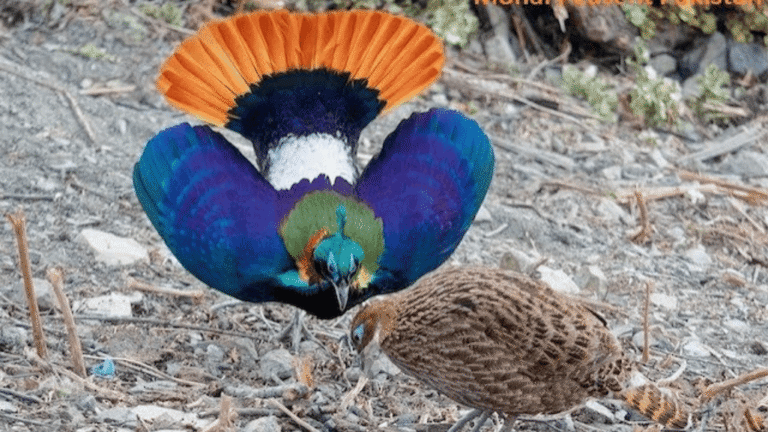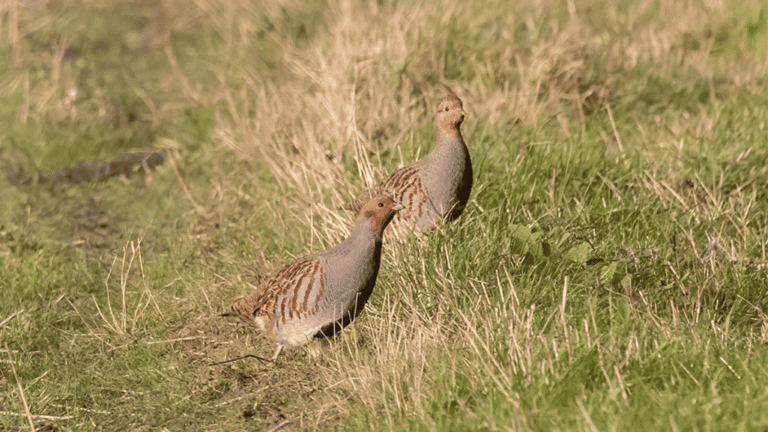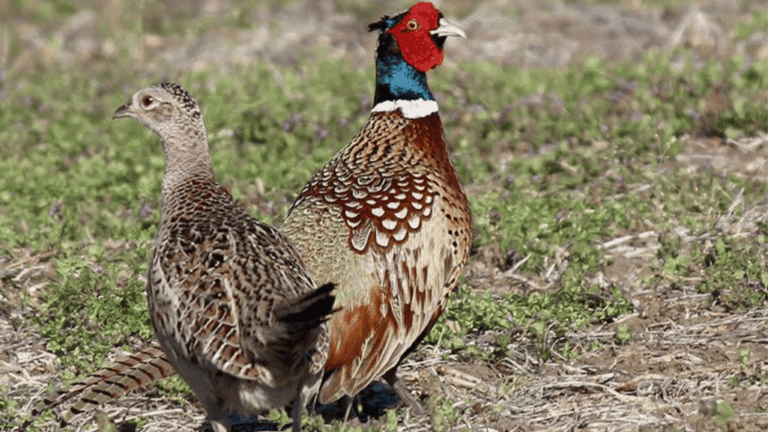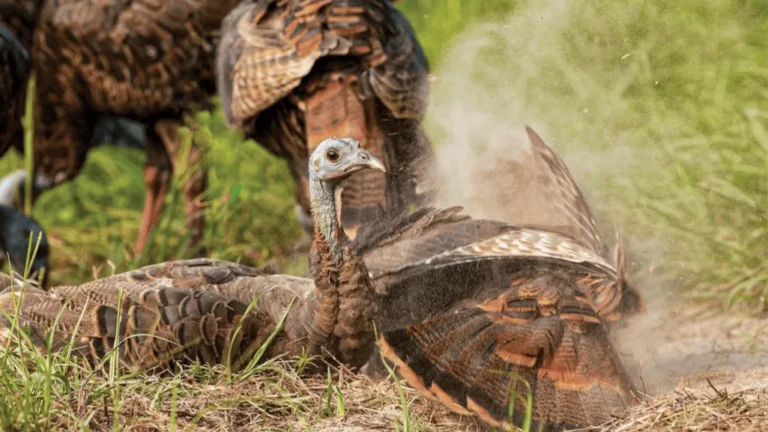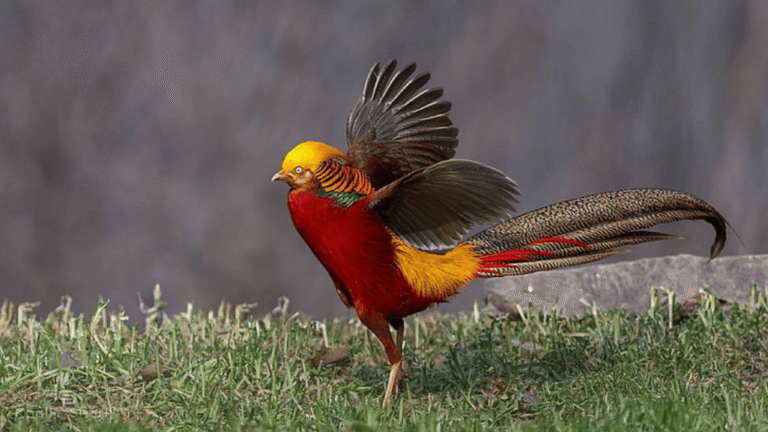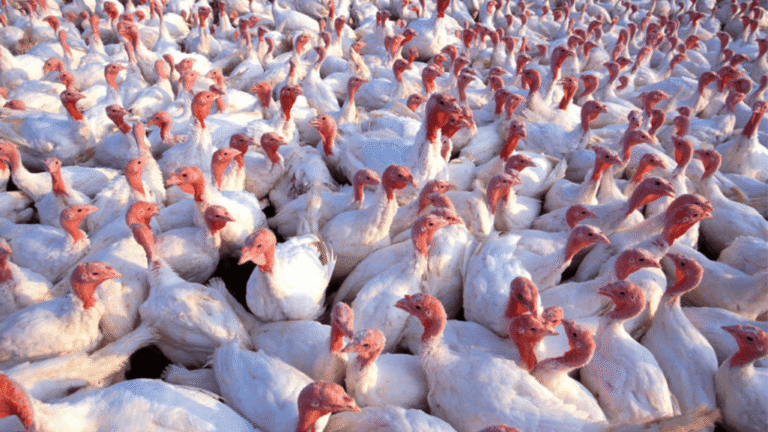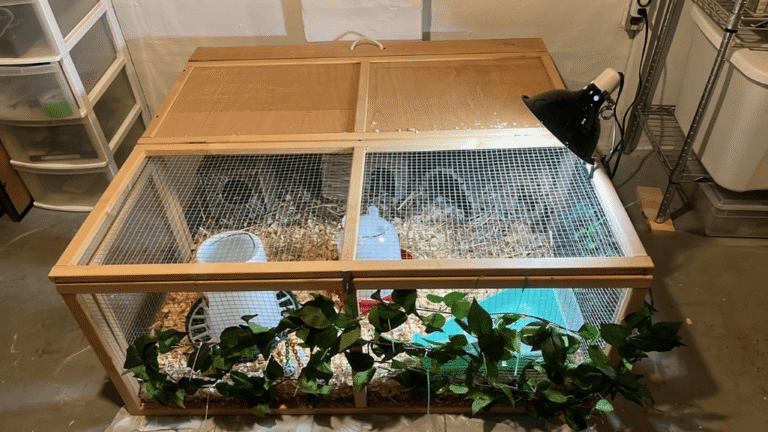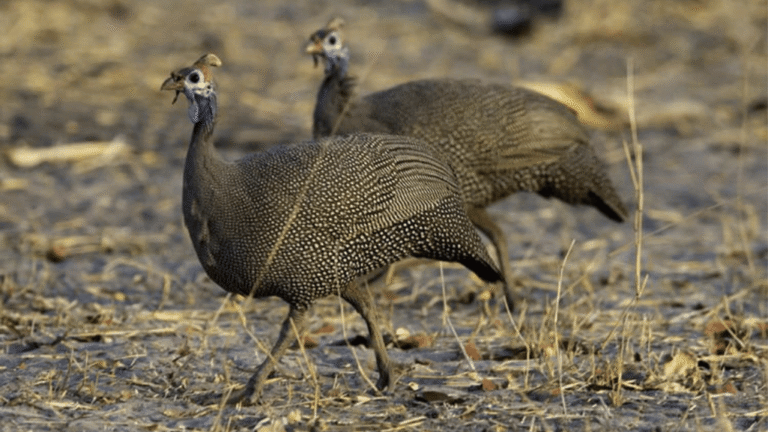Welcome — this post explores the Green Junglefowl (Gallus varius), a striking junglefowl species native to Java and the Lesser Sundas. Known for dark, iridescent feathers that can show greenish highlights in sunlight, the Green Junglefowl is a distinctive bird valued by birdwatchers and conservationists. (IUCN status: see References below.)
Male Green Junglefowl display a vivid head pattern — a blue-and-pink comb and a prominent red wattle — set against darker, iridescent body plumage; females are more cryptically colored, generally dull brown with darker spotting. These differences make identification straightforward in the field and highlight sexual dimorphism within the species.
You’ll most often find Green Junglefowl foraging on the ground in open forests, forest edges, and scrub, either alone or in small groups. Their hoarse crowing and ground-scratching behavior are characteristic — useful cues for birdwatchers seeking this wild junglefowl in its native habitat.
In the sections below we cover habitat, physical traits, distribution, and conservation — including how Green Junglefowl differ from domestic chickens and why protecting this species matters for regional avian diversity. If you’re here to support conservation, see the final section for practical ways to get involved.
Key Takeaways:
- Green Junglefowl (Gallus varius) is an endemic junglefowl species of Java and the Lesser Sundas.
- Males show a blue-and-pink comb and large red wattle; both sexes have iridescent feathers that can appear greenish in the right light.
- Females are dull brown with dark spotting and are less conspicuous than males.
- They prefer open forest, forest edges, and scrub, and are commonly observed scratching for food on the ground.
- This species contributes to local avian diversity and requires targeted conservation to address habitat loss and other threats.
The Habitat and Behavior of Green Junglefowls
Green Junglefowl occupy a range of semi-open habitats — from lowland open forests and forest edges to scrubby hillsides — and are most often recorded from sea level up into foothill zones on Java and the Lesser Sundas. As a ground-foraging junglefowl, they use leaf litter and grassy clearings to search for insects, seeds, and small plant matter, typically alone or in small parties rather than large flocks.
Field observations and guides report that Green Junglefowl usually roost in trees at night and are active during daylight hours (diurnal). Their diet is opportunistic: invertebrates (beetles, worms), fallen fruit, and seeds form the bulk of what they scratch up on the forest floor. Where available, they exploit forest edge habitats that provide both cover and open foraging areas.
Birdwatching enthusiasts often detect Green Junglefowl first by sound: the species gives a distinctive, hoarse, far-carrying crow unlike the clear crow of domestic roosters. Listen for these calls at dawn and dusk when males vocalize to advertise territory; audio records (see References) are useful for confirming sightings.
Studying behavior provides insight for conservation: knowing preferred elevation belts, feeding sites, and roosting trees helps prioritize protected areas and restoration work. See the distribution map below for where to look on Java and the Lesser Sundas, and consult local site guides for protected areas and reserves that report Green Junglefowl presence.
(Caption suggestion: Green Junglefowl habitat — open forest edge where ground foraging is common.)
Physical Characteristics of Green Junglefowls
Green Junglefowl (Gallus varius) display clear sexual dimorphism: males are colorful and showy, females cryptically patterned. Below are field-friendly details that help identification and that are useful when comparing this junglefowl to related species.
Male Green Junglefowl
Adult males have dark, highly iridescent body plumage that can take on green and bronze sheens in strong light. The back and wings show dark-centered orange and yellow feathers that create a scaled effect. The head is distinctive — a bright blue-and-pink comb and a large red wattle make males unmistakable in breeding displays. Tails are generally dark to blackish and often held in a characteristic posture during courtship. Typical adult body length ranges (field guides) are about 60–70 cm, but consult local sources for precise measurements.
Female Green Junglefowl
Females are primarily dull brown with darker spotting and barring that provide camouflage when nesting on the ground. The tail and wings are darker (blackish to grey), and the face may show a pale pinkish tone. Females are smaller than males and lack the bright head ornamentation; juvenile plumage resembles adult females until the first molt.
These physical traits — iridescent feathers, scaled wing pattern, colored comb and wattle — make the Green Junglefowl an identifiable member of the Gallus genus. For context, Gallus contains a small group of junglefowl species (including the red junglefowl, the ancestor of domestic chickens); see the comparison section for more on how Gallus varius differs from domestic chickens.
Distribution of Green Junglefowls
The Green Junglefowl (Gallus varius) has a restricted natural range: it is native to Java and the Lesser Sundas, with populations recorded from Bali eastwards through islands such as Lombok and Flores to Alor. Outside its native range, small introduced populations have been reported (for example, the Cocos Islands). Use the distribution map and local site guides to pinpoint suitable areas for observation.
Because the Green Junglefowl occupies island habitats, populations can be fragmented between islands and even between suitable patches on a single island. Conservation status and population trends vary by site; consult IUCN and BirdLife range maps for up-to-date site-specific information and recent survey years.
Distribution table
| RegionStatus | |
| Java | Native / Endemic |
| Lesser Sundas (Bali → Alor) | Native / Endemic |
| Bali | Native / Endemic |
| Alor | Native / Endemic |
| Cocos Islands | Introduced |
The Green Junglefowl vs. Domestic Chickens
Green Junglefowl (a wild junglefowl in the genus Gallus) and domestic chickens share an ancestral lineage but differ in ecology, appearance, and relationship with people. Green Junglefowl retain wild behaviors — natural foraging, tree roosting, and territorial vocal displays — and display dark, iridescent plumage. Domestic chickens, derived principally from the red junglefowl (Gallus gallus), have been selectively bred on farms for size, egg or meat production, and a wide variety of feather colors.
Where their ranges and human activity overlap, interbreeding has produced hybrids — the best-known is the Bekisar, a hybrid between Green Junglefowl and domestic chickens kept historically in parts of Indonesia for its song and appearance. Note: hybridization can be complex — frequency, fertility, and cultural use vary by locale, so treat blanket “no/yes” statements cautiously and consult regional research for specifics.
Comparison of Green Junglefowls and Domestic Chickens
| CriteriaGreen JunglefowlsDomestic Chickens | ||
| Appearance | Dark, iridescent feathers with greenish sheen; distinctive blue/pink comb in males | Wide range of colors and breeds due to selective breeding |
| Behavior | Natural foragers, roost in trees, territorial males | Often ground-dwelling, rely on humans for food and shelter on farms |
| Evolution | Wild species native to islands of Indonesia | Domesticated lineage (primarily from red junglefowl) adapted to human-managed systems |
| Hybrid notes | Hybridization can occur where Green Junglefowl and domestic chickens meet; Bekisar hybrids are culturally significant in parts of Indonesia (see References). | Domestic chickens readily hybridize with wild junglefowl where contact occurs; outcomes depend on species, management and local practices. |
Understanding these differences — and the places where domestic chickens and wild junglefowl interact — is important for both conservation and for managing genetic integrity of wild populations. For more detailed research on Gallus species and their relationships (including the red junglefowl and the count of recognized Gallus species), consult the References and research section below.
Importance of Green Junglefowl Conservation
As an island endemic, the Green Junglefowl plays a key role in local avian diversity and ecosystem function across Java and the Lesser Sundas. Conserving this junglefowl species helps maintain seed dispersal, insect control, and the overall health of open-forest and edge habitats. Recent assessments (see References) also indicate population pressures that warrant focused action.
Habitat loss from agricultural expansion, logging and infrastructure development is the primary long-term threat. Fragmentation leaves island populations isolated and vulnerable to stochastic events; introduced predators and competition with free-ranging domestic chickens on some islands add further pressure. Illegal trapping for the pet trade and occasional hunting for meat or ornamental feathers are additional, site-specific threats reported in several years of field studies.
Effective conservation combines habitat protection with community-led measures. Protected areas that preserve open-forest and edge habitat are essential, but on-the-ground success also depends on sustainable land-use planning around reserves, reforestation of degraded patches, and enforcement against illegal capture and trade.
Community engagement and education offer practical gains: programs that provide alternative livelihoods, promote sustainable farming practices, and reduce dependence on forest resources decrease pressure on junglefowl habitat. Citizen science and local monitoring projects also generate valuable data for researchers and protected-area managers.
Threats to Green Junglefowls
Key threats include habitat loss and fragmentation, competition and genetic mixing with free-ranging domestic chickens, illegal trapping for the pet and ornamental trade, and localized hunting. Addressing these threats requires coordinated enforcement, community outreach, and targeted on-the-ground conservation actions informed by up-to-date research.
| Conservation EffortsDescription | |
| Protected Areas | Establish and manage reserves that include open forest and edge habitats known to support Green Junglefowl. |
| Sustainable Land-use | Promote farming and development practices that reduce habitat conversion and maintain habitat corridors between patches. |
| Reforestation | Restore degraded areas to expand foraging and nesting habitat and reconnect fragmented populations. |
| Legal Protection & Enforcement | Strengthen laws and on-the-ground enforcement against trapping, illegal trade, and unsustainable hunting. |
| Community Engagement | Work with local communities on education, alternative livelihoods, and participatory monitoring to reduce threats and build stewardship. |
Conclusion
The Green Junglefowl (Gallus varius) is an unmistakable junglefowl species whose dark, iridescent feathers, blue-and-pink comb in males, and ground-foraging behavior make it a favorite among birdwatchers. Native to Java and the Lesser Sundas, this wild fowl contributes to local avian diversity and helps maintain ecological processes in open-forest and edge habitats.
Protecting the Green Junglefowl is essential: habitat loss, fragmentation, illegal trapping, and interactions with domestic chickens threaten some island populations. Effective conservation combines protected-area management, community engagement, and research-driven actions to monitor populations and reduce threats (see References for IUCN and BirdLife links).
Want to help? To support conservation, consider contributing to organizations working in Indonesia, joining citizen-science surveys that monitor junglefowl, or sharing this post to raise awareness about this remarkable bird. See the References and Further Reading section below for specific links and recent research.


